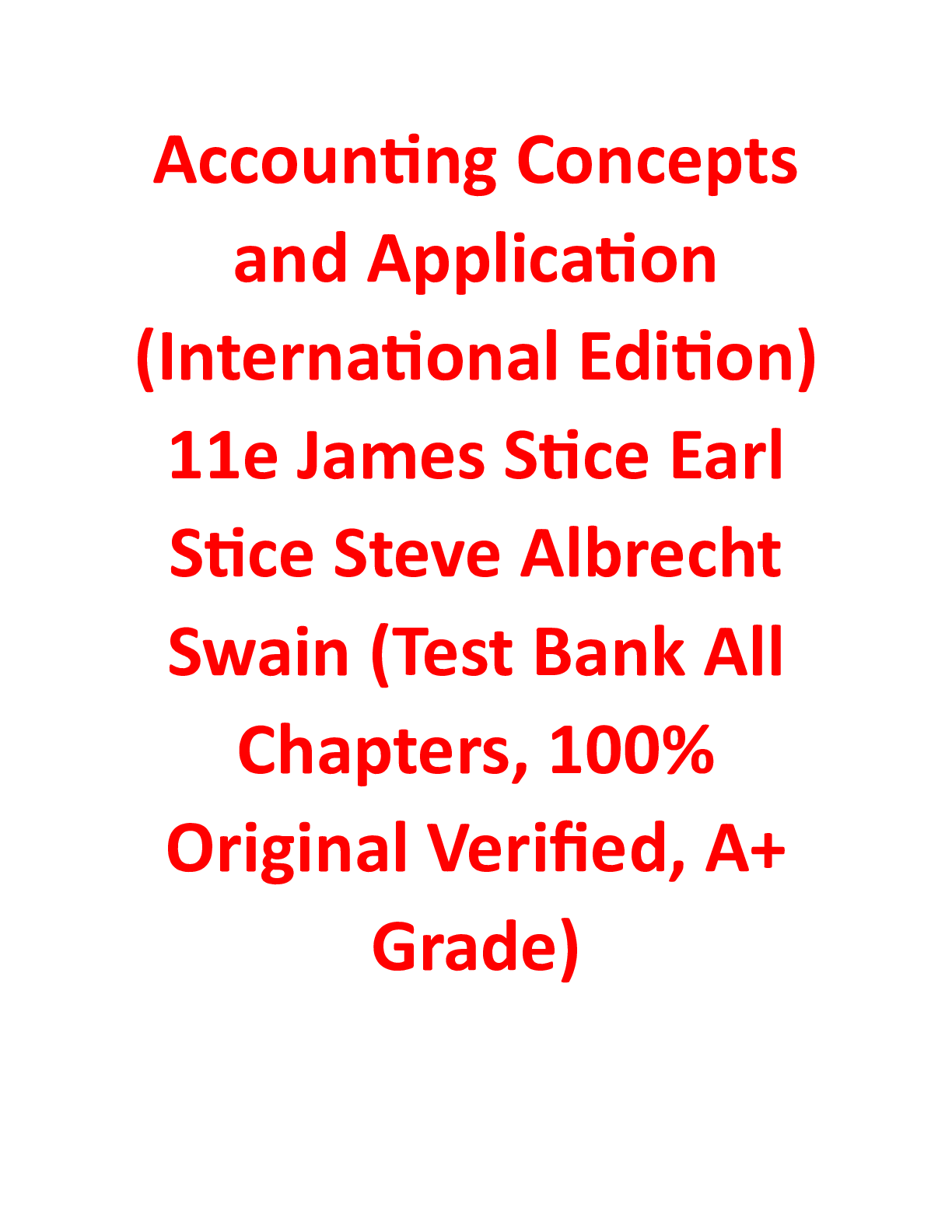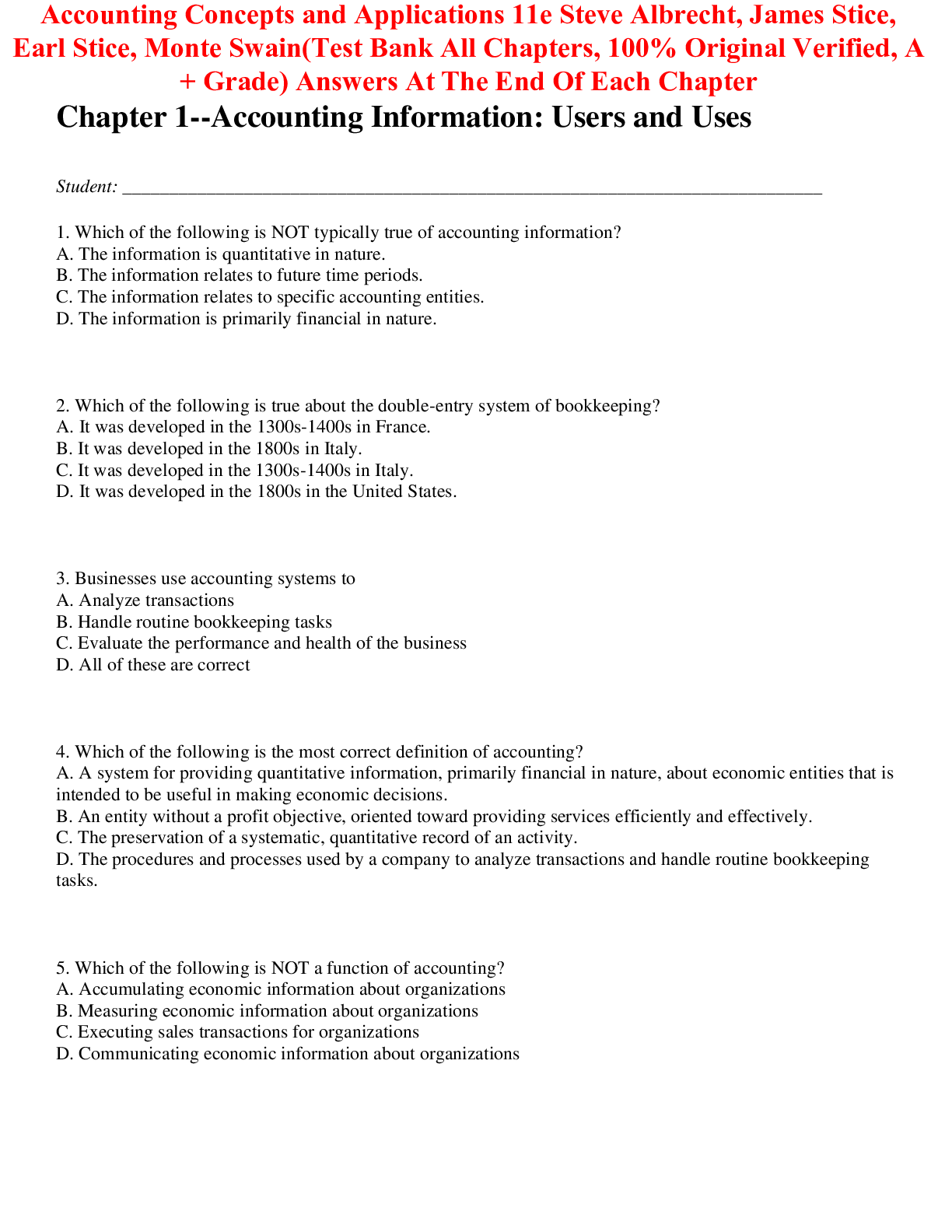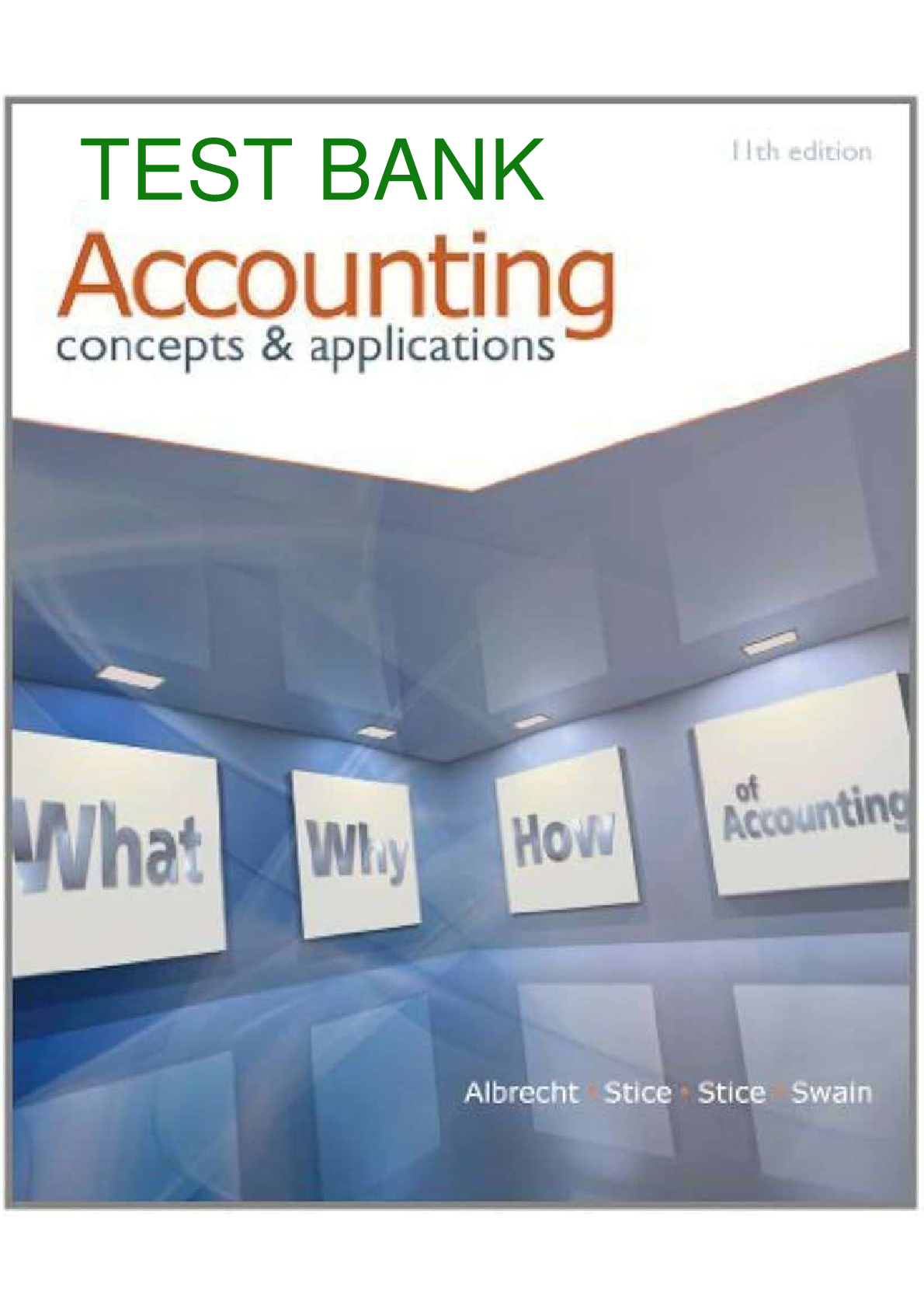Accounting > TEST BANKS > Test Bank For Accounting Concepts and Application (International Edition) 11e James Stice Earl Stice (All)
Test Bank For Accounting Concepts and Application (International Edition) 11e James Stice Earl Stice Steve Albrecht Swain
Document Content and Description Below
Test Bank For Accounting Concepts and Application (International Edition) 11e James Stice Earl Stice Steve Albrecht Swain-1. Which of the following is NOT typically true of accounting information? a.... The information is quantitative in nature. b. The information relates to future time periods. c. The information relates to specific accounting entities. d. The information is primarily financial in nature. ANS: B PTS: 1 DIF: Easy OBJ: 1.1 NAT: AACSB Reflective Thinking | AICPA FN Measurement 2. Which of the following is true about the double-entry system of bookkeeping? a. It was developed in the 1300s1400s in France. b. It was developed in the 1800s in Italy. c. It was developed in the 1300s1400s in Italy. d. It was developed in the 1800s in the United States. ANS: C PTS: 1 DIF: Easy OBJ: 1.1 NAT: AACSB Reflective Thinking | AICPA FN Measurement 3. Businesses use accounting systems to a. Analyze transactions b. Handle routine bookkeeping tasks c. Evaluate the performance and health of the business d. All of these are correct ANS: D PTS: 1 DIF: Easy OBJ: 1.1 NAT: AACSB Reflective Thinking | AICPA FN Measurement 4. Which of the following is the most correct definition of accounting? a. A system for providing quantitative information, primarily financial in nature, about economic entities that is intended to be useful in making economic decisions. b. An entity without a profit objective, oriented toward providing services efficiently and effectively. c. The preservation of a systematic, quantitative record of an activity. d. The procedures and processes used by a company to analyze transactions and handle routine bookkeeping tasks. ANS: A PTS: 1 DIF: Easy OBJ: 1.1 NAT: AACSB Reflective Thinking | AICPA FN Measurement 5. Which of the following is NOT a function of accounting? a. Accumulating economic information about organizations b. Measuring economic information about organizations c. Executing sales transactions for organizations d. Communicating economic information about organizations ANS: C PTS: 1 DIF: Easy OBJ: 1.1 NAT: AACSB Reflective Thinking | AICPA FN Measurement 6. Which of the following is NOT a key component of the definition of accounting? a. Financial b. Qualitative c. Useful d. Decision-oriented ANS: B PTS: 1 DIF: Easy OBJ: 1.1 NAT: AACSB Reflective Thinking | AICPA FN Measurement 7. Which of the following is NOT a step in the decision making process? a. Identify the issue. b. Identify alternatives. c. Select the option that will result in the greatest financial increase. d. Gather information. ANS: C PTS: 1 DIF: Easy OBJ: 1.1 NAT: AACSB Reflective Thinking | AICPA FN Decision Modeling 8. Accounting can be best described as a a. Manufacturing activity b. Service activity c. Retailing activity d. All of these are correct ANS: B PTS: 1 DIF: Easy OBJ: 1.1 NAT: AACSB Reflective Thinking | AICPA FN Measurement 9. Which of the following is NOT a typical source of monetary resources for a business enterprise? a. Investors b. Creditors c. Business earnings d. Employees ANS: D PTS: 1 DIF: Easy OBJ: 1.1 NAT: AACSB Reflective Thinking | AICPA FN Measurement 10. Accountants typically perform what action related to the financial results of business activities? a. Report the results of business activities b. Advise on how to structure business activities c. Both report the results of and advise on how to structure business activities d. None of these are correct ANS: C PTS: 1 DIF: Easy OBJ: 1.1 NAT: AACSB Reflective Thinking | AICPA FN Reporting 11. The accounting cycle includes all of the following, EXCEPT: a. Recording b. Summarizing c. Analyzing d. Interpreting ANS: D PTS: 1 DIF: Easy OBJ: 1.1 NAT: AACSB Reflective Thinking | AICPA FN Measurement 12. The emphasis in financial accounting is on which of the following external user groups? a. Management b. Certified public accountants c. Investors and creditors d. Educators ANS: C PTS: 1 DIF: Easy OBJ: 1.2 NAT: AACSB Reflective Thinking | AICPA FN Reporting 13. The primary internal group that uses accounting information is a. Government agencies b. Investors c. Management d. Competitors ANS: C PTS: 1 DIF: Easy OBJ: 1.2 NAT: AACSB Reflective Thinking | AICPA FN Reporting 14. Internal reports are generally used by a. Management b. Suppliers c. Lenders d. Employees ANS: A PTS: 1 DIF: Easy OBJ: 1.2 NAT: AACSB Reflective Thinking | AICPA FN Reporting 15. Which of the following is NOT an important aspect of management accounting? a. Planning b. Product design c. Implementing plans d. Controlling costs ANS: B PTS: 1 DIF: Easy OBJ: 1.2 NAT: AACSB Reflective Thinking | AICPA FN Reporting 16. The area of accounting that is concerned with providing information for external users is referred to as a. Financial accounting b. Governmental accounting c. Management accounting d. Not-for-profit accounting ANS: A PTS: 1 DIF: Easy OBJ: 1.2 NAT: AACSB Reflective Thinking | AICPA FN Reporting 17. Which of the following is NOT one of the three primary financial statements? a. Statement of cash flows b. Income statement c. Statement of retained earnings d. Balance sheet ANS: C PTS: 1 DIF: Easy OBJ: 1.2 NAT: AACSB Reflective Thinking | AICPA FN Reporting 18. Which of the following financial statements reports a company's resources, obligations, and owner's equity? a. Balance sheet b. Income statement c. Statement of retained earnings d. Statement of cash flows ANS: A PTS: 1 DIF: Easy OBJ: 1.2 NAT: AACSB Reflective Thinking | AICPA FN Reporting 19. Which of the following financial statements reports the excess of a company's revenues over its expenses? a. Balance sheet b. Income statement c. Statement of retained earnings d. Statement of cash flows ANS: B PTS: 1 DIF: Easy OBJ: 1.2 NAT: AACSB Reflective Thinking | AICPA FN Reporting 20. Which of the following financial statements reports the amount of cash collected and paid out by a company? a. Balance sheet b. Income statement c. Statement of retained earnings d. Statement of cash flows ANS: D PTS: 1 DIF: Easy OBJ: 1.2 NAT: AACSB Reflective Thinking | AICPA FN Reporting 21. Which of the following is NOT an external user of financial information? a. Competitors b. Employees c. Management d. Suppliers ANS: C PTS: 1 DIF: Easy OBJ: 1.2 NAT: AACSB Reflective Thinking | AICPA FN Reporting [Show More]
Last updated: 4 months ago
Preview 5 out of 751 pages

Loading document previews ...
Buy this document to get the full access instantly
Instant Download Access after purchase
Buy NowInstant download
We Accept:

Reviews( 0 )
$18.50
Can't find what you want? Try our AI powered Search
Document information
Connected school, study & course
About the document
Uploaded On
Mar 18, 2025
Number of pages
751
Written in
Additional information
This document has been written for:
Uploaded
Mar 18, 2025
Downloads
0
Views
25

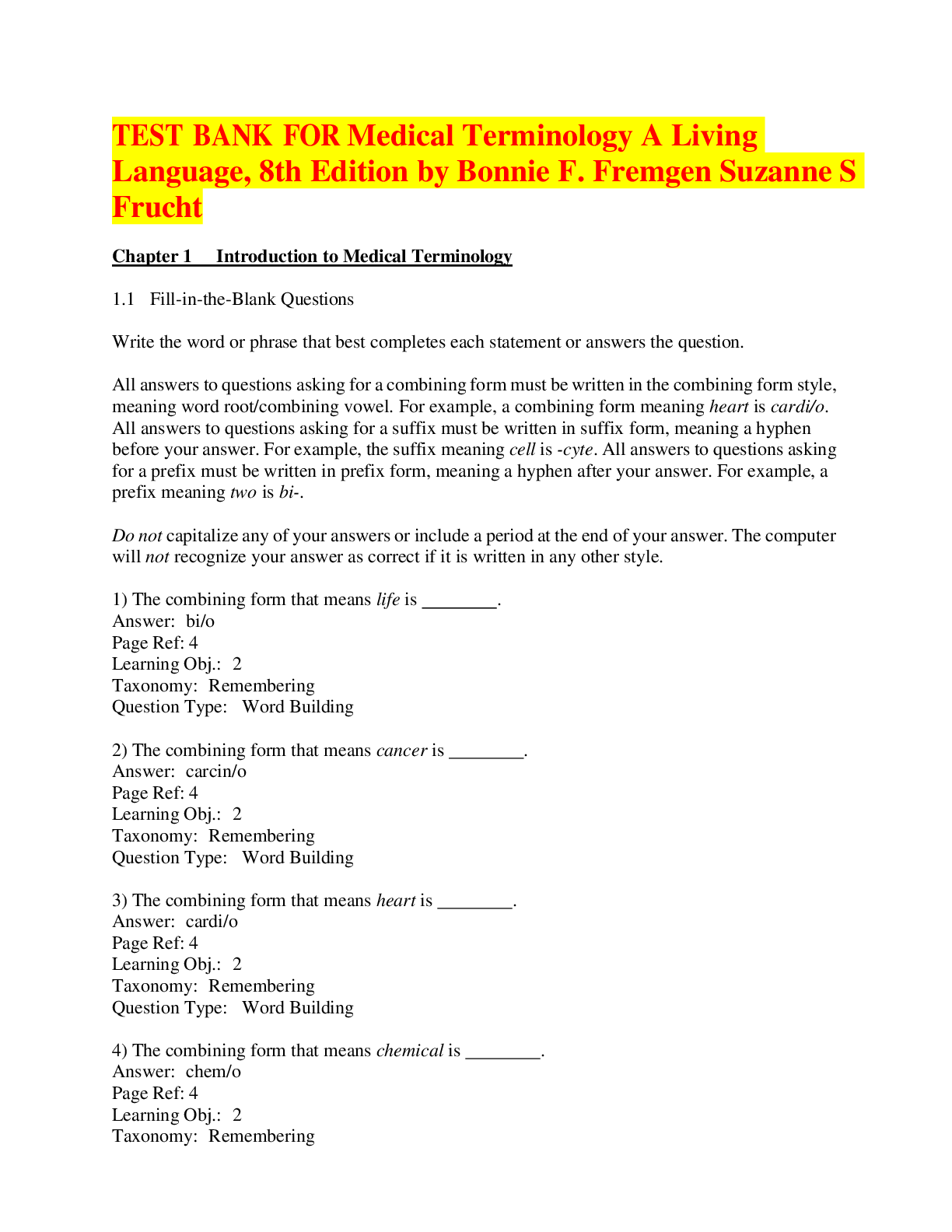
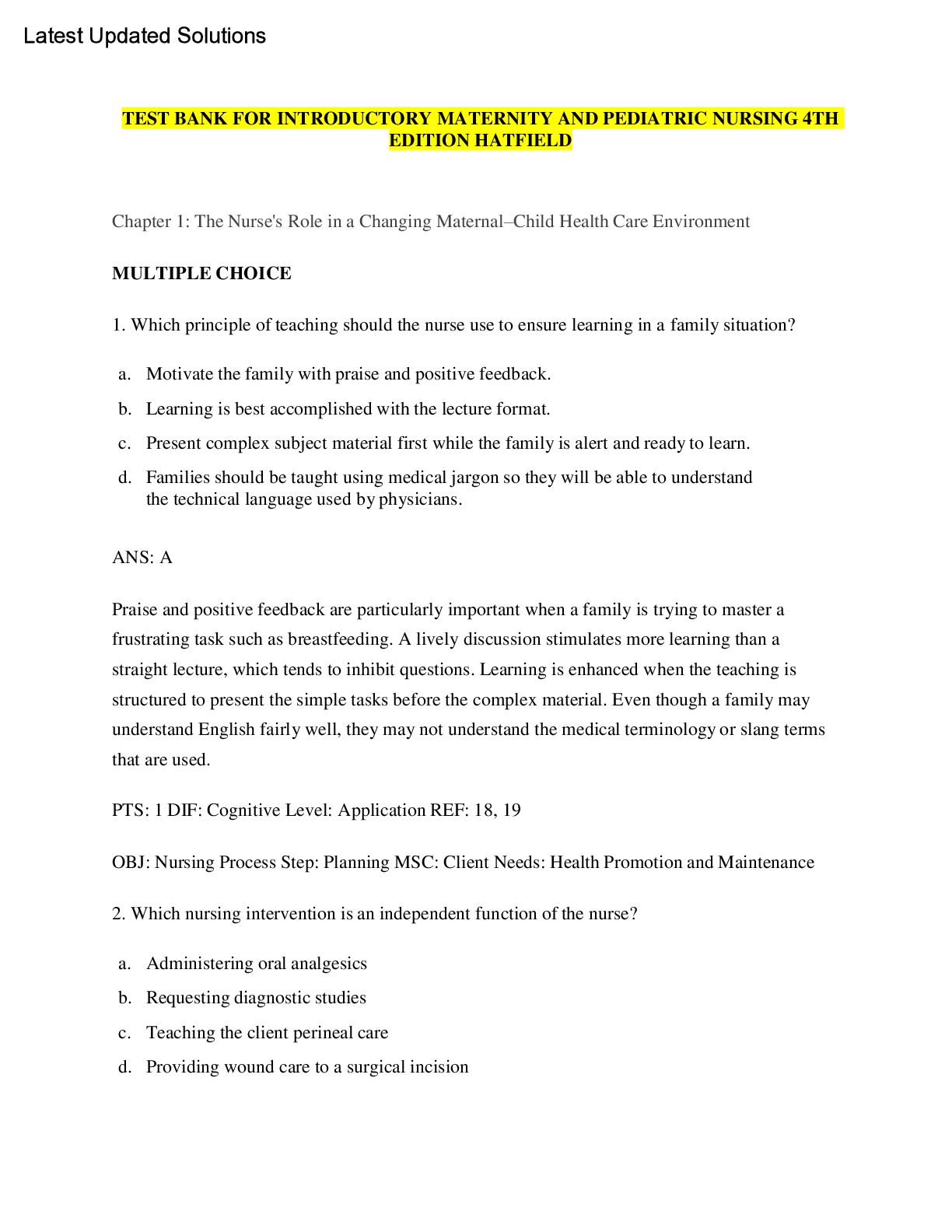
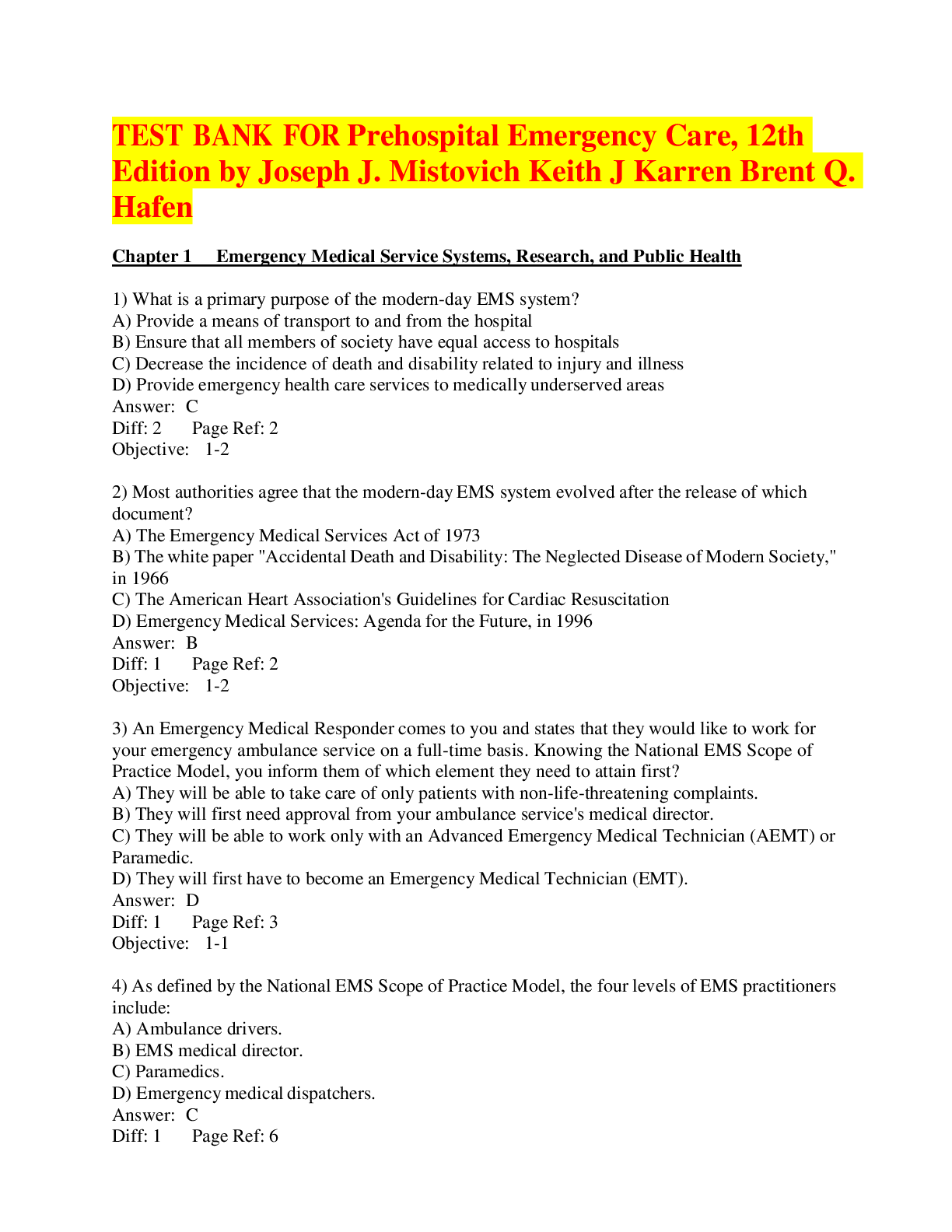


_compressed.png)
.png)
.png)


.png)
